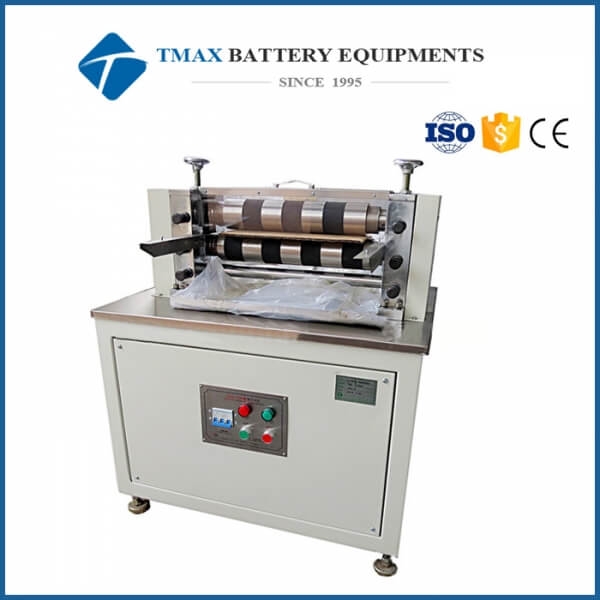مدونة الموقع
اتصل بنا
- إذا كانت لديك أسئلة، يرجى الاتصال بنا، وسيتم الرد على جميع الأسئلة
- البريد الإلكتروني : David@tmaxcn.com
- البريد الإلكتروني : Davidtmaxcn@gmail.com
- إضافة : No. 39, Xinchang Road, Xinyang, Haicang Dist., Xiamen, Fujian, China (Mainland)
المنتجات الساخنة
مدونة
Battery Machines
Battery machines are specialized equipment designed to manufacture, assemble, and test batteries. These machines play a crucial role in ensuring the quality, efficiency, and scalability of battery production for various applications, including electric vehicles (EVs), consumer electronics, renewable energy storage, and industrial systems.
In this article, we will explore the types, functionalities, advantages, challenges, and innovations driving the evolution of battery machines.
●Types of Battery Machines
Battery manufacturing involves multiple stages, each requiring specific machinery. Below are the key types of battery machines:
1. Electrode Preparation Machines
Function: Prepare electrodes by mixing active materials, binders, and conductive additives.
Dry Electrode Machines: Use dry mixing, compression, and lamination techniques without solvents.
Wet Electrode Machines: Use solventbased slurries for coating electrodes onto current collector foils.
Key Features:
Precise material blending.
Uniform powder distribution or slurry application.
Realtime monitoring of thickness and density.
2. Coating and Calendering Machines
Function: Apply and compact active materials onto current collector foils.
Coating Machines: Deposit slurry or powder onto aluminum or copper foils.
Calendering Machines: Compact coated electrodes to achieve desired density and porosity.
Key Features:
Adjustable pressure and temperature control.
Highspeed operation with minimal defects.
3. Cutting and Slitting Machines
Function: Cut or slit coated electrodes into precise dimensions for cell assembly.
Key Features:
Highprecision cutting tools.
Minimal edge damage and dust generation.
4. Stacking and Winding Machines
Function: Assemble electrodes and separators into stacked or wound configurations.
Stacking Machines: Used for prismatic and pouch cells.
Winding Machines: Used for cylindrical cells.
Key Features:
Automated alignment and tension control.
Ensures uniform layer stacking or winding.
5. Cell Assembly Machines
Function: Integrate electrodes, separators, electrolytes, and casing into complete battery cells.
Key Features:
Precision handling of sensitive components.
Sealing mechanisms for pouch and prismatic cells.
6. Formation and Aging Chambers
Function: Activate and stabilize battery cells through controlled charging and discharging cycles.
Key Features:
Temperaturecontrolled environments.
Realtime data collection for quality assurance.
7. Testing and Sorting Machines
Function: Evaluate cell performance and sort them based on capacity, internal resistance, and other parameters.
Key Features:
Advanced sensors for accurate measurements.
Automated sorting mechanisms.
●Key Functionalities of Battery Machines
1. Material Handling:
Efficiently transports raw materials, electrodes, and assembled cells through the production line.
2. Precision Control:
Ensures uniformity in thickness, density, and alignment of components.
3. RealTime Monitoring:
Continuously measures critical parameters such as thickness, density, and electrical properties.
4. Automation:
Reduces human intervention, minimizes errors, and increases throughput.
5. Scalability:
Adaptable to different battery chemistries and form factors (cylindrical, prismatic, pouch).
●Advantages of Battery Machines
1. High Throughput:
Enables mass production of batteries with consistent quality.
2. Cost Efficiency:
Minimizes material waste and labor costs through automation.
3. Improved Performance:
Ensures optimal electrode density, porosity, and alignment for better battery performance.
4. Environmental Benefits:
Dry electrode machines reduce solvent use, lowering emissions and waste.
5. Customization:
Can be tailored to handle specific materials and chemistries, including nextgeneration technologies like solidstate batteries.
●Challenges in Battery Machines
1. Complex Material Handling:
Delicate materials like solidstate electrolytes require specialized handling to avoid damage.
2. Uniformity Control:
Achieving consistent thickness, density, and alignment across large batches is challenging.
3. Binder Selection:
Developing binders that work effectively in dry conditions while maintaining adhesion is complex.
4. High Initial Costs:
Advanced machinery and specialized components come with significant upfront investment.
5. Process Optimization:
Finetuning parameters such as temperature, pressure, and speed is essential for achieving consistent results.
●Innovations in Battery Machines
To address these challenges and enhance productivity, manufacturers are incorporating cuttingedge technologies:
1. AI and Machine Learning:
Predictive analytics optimize machine performance, detect anomalies, and improve yield rates.
2. RealTime Monitoring Systems:
Integrated sensors and vision systems provide continuous feedback on critical parameters.
3. Modular Design:
Flexible systems allow for easy reconfiguration to test new materials and chemistries.
4. Sustainability Features:
Ecofriendly practices and recycling capabilities minimize waste and energy consumption.
5. Integration with Automation:
Collaborative robots (cobots) and IoTenabled systems enhance efficiency and reduce human intervention.
●Applications of Battery Machines
Battery machines are used in various industries, including:
1. Electric Vehicles (EVs):
Manufactures highcapacity, longlife batteries for EVs.
2. Consumer Electronics:
Produces compact and efficient batteries for smartphones, wearables, and portable devices.
3. Renewable Energy:
Develops durable batteries for gridscale energy storage systems.
4. Industrial Applications:
Creates highperformance batteries for heavyduty applications like trucks, buses, and construction equipment.
●The Future of Battery Machines
As the demand for sustainable and highperformance energy storage solutions grows, battery machines will continue to evolve. Key trends shaping the future include:
1. Increased Automation:
Fully autonomous systems will further boost production speeds and reduce costs.
2. Customization Options:
Modular designs will enable manufacturers to tailor systems for specific materials and cell designs.
3. Focus on Sustainability:
Ecofriendly practices and recycling capabilities will become integral parts of future systems.
4. Integration with Emerging Technologies:
Solidstate batteries, flexible electronics, and autonomous systems will drive new innovations in system design.
5. Smart Manufacturing:
IoTenabled systems will leverage big data and AI to optimize production, reduce waste, and enhance efficiency.
●Conclusion
Battery machines are the backbone of modern energy storage manufacturing, enabling the development of highperformance, costeffective, and sustainable batteries. Their ability to handle diverse materials, optimize processes, and scale production makes them indispensable for meeting the growing global demand for energy storage solutions.
August 19,2025.
Xiamen Tmax Battery Equipments Limited was set up as a manufacturer in 1995, dealing with lithium battery equipments, technology, etc. We have total manufacturing facilities of around 200000 square foot and more than 230 staff. Owning a group of experie-nced engineers and staffs, we can bring you not only reliable products and technology, but also excellent services and real value you will expect and enjoy.
Battery Machines: The Backbone of Modern Energy Storage Manufacturing
Battery machines are specialized equipment designed to manufacture, assemble, and test batteries. These machines play a crucial role in ensuring the quality, efficiency, and scalability of battery production for various applications, including electric vehicles (EVs), consumer electronics, renewable energy storage, and industrial systems.
In this article, we will explore the types, functionalities, advantages, challenges, and innovations driving the evolution of battery machines.
●Types of Battery Machines
Battery manufacturing involves multiple stages, each requiring specific machinery. Below are the key types of battery machines:
1. Electrode Preparation Machines
Function: Prepare electrodes by mixing active materials, binders, and conductive additives.
Dry Electrode Machines: Use dry mixing, compression, and lamination techniques without solvents.
Wet Electrode Machines: Use solventbased slurries for coating electrodes onto current collector foils.
Key Features:
Precise material blending.
Uniform powder distribution or slurry application.
Realtime monitoring of thickness and density.
2. Coating and Calendering Machines
Function: Apply and compact active materials onto current collector foils.
Coating Machines: Deposit slurry or powder onto aluminum or copper foils.
Calendering Machines: Compact coated electrodes to achieve desired density and porosity.
Key Features:
Adjustable pressure and temperature control.
Highspeed operation with minimal defects.
3. Cutting and Slitting Machines
Function: Cut or slit coated electrodes into precise dimensions for cell assembly.
Key Features:
Highprecision cutting tools.
Minimal edge damage and dust generation.
4. Stacking and Winding Machines
Function: Assemble electrodes and separators into stacked or wound configurations.
Stacking Machines: Used for prismatic and pouch cells.
Winding Machines: Used for cylindrical cells.
Key Features:
Automated alignment and tension control.
Ensures uniform layer stacking or winding.
5. Cell Assembly Machines
Function: Integrate electrodes, separators, electrolytes, and casing into complete battery cells.
Key Features:
Precision handling of sensitive components.
Sealing mechanisms for pouch and prismatic cells.
6. Formation and Aging Chambers
Function: Activate and stabilize battery cells through controlled charging and discharging cycles.
Key Features:
Temperaturecontrolled environments.
Realtime data collection for quality assurance.
7. Testing and Sorting Machines
Function: Evaluate cell performance and sort them based on capacity, internal resistance, and other parameters.
Key Features:
Advanced sensors for accurate measurements.
Automated sorting mechanisms.
●Key Functionalities of Battery Machines
1. Material Handling:
Efficiently transports raw materials, electrodes, and assembled cells through the production line.
2. Precision Control:
Ensures uniformity in thickness, density, and alignment of components.
3. RealTime Monitoring:
Continuously measures critical parameters such as thickness, density, and electrical properties.
4. Automation:
Reduces human intervention, minimizes errors, and increases throughput.
5. Scalability:
Adaptable to different battery chemistries and form factors (cylindrical, prismatic, pouch).
●Advantages of Battery Machines
1. High Throughput:
Enables mass production of batteries with consistent quality.
2. Cost Efficiency:
Minimizes material waste and labor costs through automation.
3. Improved Performance:
Ensures optimal electrode density, porosity, and alignment for better battery performance.
4. Environmental Benefits:
Dry electrode machines reduce solvent use, lowering emissions and waste.
5. Customization:
Can be tailored to handle specific materials and chemistries, including nextgeneration technologies like solidstate batteries.
●Challenges in Battery Machines
1. Complex Material Handling:
Delicate materials like solidstate electrolytes require specialized handling to avoid damage.
2. Uniformity Control:
Achieving consistent thickness, density, and alignment across large batches is challenging.
3. Binder Selection:
Developing binders that work effectively in dry conditions while maintaining adhesion is complex.
4. High Initial Costs:
Advanced machinery and specialized components come with significant upfront investment.
5. Process Optimization:
Finetuning parameters such as temperature, pressure, and speed is essential for achieving consistent results.
●Innovations in Battery Machines
To address these challenges and enhance productivity, manufacturers are incorporating cuttingedge technologies:
1. AI and Machine Learning:
Predictive analytics optimize machine performance, detect anomalies, and improve yield rates.
2. RealTime Monitoring Systems:
Integrated sensors and vision systems provide continuous feedback on critical parameters.
3. Modular Design:
Flexible systems allow for easy reconfiguration to test new materials and chemistries.
4. Sustainability Features:
Ecofriendly practices and recycling capabilities minimize waste and energy consumption.
5. Integration with Automation:
Collaborative robots (cobots) and IoTenabled systems enhance efficiency and reduce human intervention.
●Applications of Battery Machines
Battery machines are used in various industries, including:
1. Electric Vehicles (EVs):
Manufactures highcapacity, longlife batteries for EVs.
2. Consumer Electronics:
Produces compact and efficient batteries for smartphones, wearables, and portable devices.
3. Renewable Energy:
Develops durable batteries for gridscale energy storage systems.
4. Industrial Applications:
Creates highperformance batteries for heavyduty applications like trucks, buses, and construction equipment.
●The Future of Battery Machines
As the demand for sustainable and highperformance energy storage solutions grows, battery machines will continue to evolve. Key trends shaping the future include:
1. Increased Automation:
Fully autonomous systems will further boost production speeds and reduce costs.
2. Customization Options:
Modular designs will enable manufacturers to tailor systems for specific materials and cell designs.
3. Focus on Sustainability:
Ecofriendly practices and recycling capabilities will become integral parts of future systems.
4. Integration with Emerging Technologies:
Solidstate batteries, flexible electronics, and autonomous systems will drive new innovations in system design.
5. Smart Manufacturing:
IoTenabled systems will leverage big data and AI to optimize production, reduce waste, and enhance efficiency.
●Conclusion
Battery machines are the backbone of modern energy storage manufacturing, enabling the development of highperformance, costeffective, and sustainable batteries. Their ability to handle diverse materials, optimize processes, and scale production makes them indispensable for meeting the growing global demand for energy storage solutions.
What excites you most about the role of battery machines in driving innovation and sustainability in the energy storage sector? Share your thoughts below! Together, let’s explore how this technology can shape the future of energy storage.
 ru
ru English
English











 +86 13174506016
+86 13174506016 David@tmaxcn.com
David@tmaxcn.com

